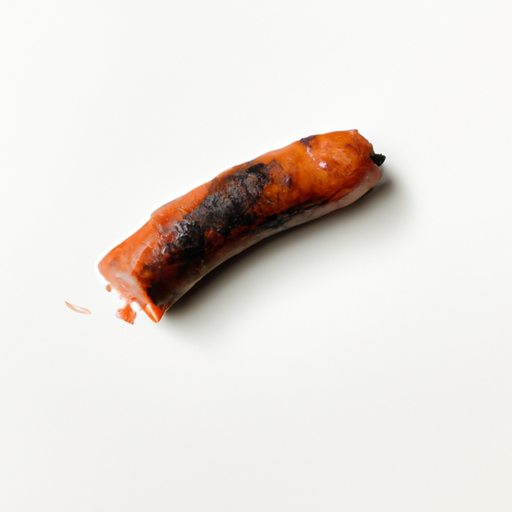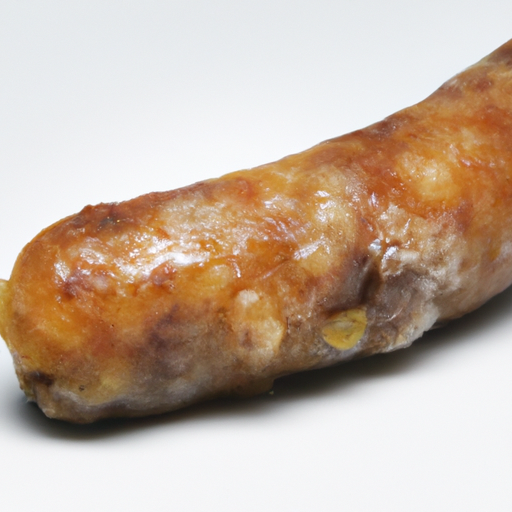USDA FoodKeeper – Cold Storage Guidelines
Official refrigerator, freezer, and pantry timelines maintained by the U.S. Department of Agriculture.
Visit USDA FoodKeeperAfter a hearty breakfast featuring your favorite cooked breakfast sausage, it’s tempting to stash those leftovers for later. However, with a shelf life of just four days in the fridge, it’s crucial to enjoy them safely to avoid any foodborne risks. Proper storage not only keeps them tasty but also ensures your meals remain worry-free!
Cooked Breakfast Sausage Leftovers should not be consumed after its expiration date due to the high risk of foodborne illness. Always discard expired cooked breakfast sausage leftovers to protect your health.
"According to USDA guidelines, cooked breakfast sausage leftovers should be refrigerated within 2 hours of cooking and consumed within 3 to 4 days for optimal safety."


Fridge
34-40°F (1-4°C)
Store in airtight container or wrap tightly. Refrigerate within 2 hours of cooking. Keep away from other foods.
Proper cooking temperatures are critical for food safety. An instant-read food thermometer (Amazon) helps ensure meat reaches safe internal temperatures and reduces the risk of foodborne illness.
4 days
60 days
Off odor, slimy texture, discoloration, mold growth, rancid smell, unusual color changes
Vacuum sealing before freezing can help reduce freezer burn and extend storage time. A vacuum sealer (Amazon) helps maintain food quality during longer freezer storage.
Crumble for omelets, add to breakfast casseroles, use in stuffing
Other cooked breakfast meats, ham, bacon
The expiration date on cooked breakfast sausage leftovers is a guideline for food safety. After this date, the risk of foodborne illness increases. However, the best quality of the sausage may decline before the expiration date due to flavor and texture changes. It's recommended to consume the leftovers within 3-4 days for optimal quality and safety.
To determine if cooked breakfast sausage leftovers have gone bad, look for any visible mold growth, a sour or unpleasant odor, or a slimy texture. If you notice any of these signs, it's best to discard the sausage to avoid the risk of foodborne illness.
Cooked breakfast sausage leftovers can pose a risk of foodborne illness if not stored properly. Bacteria like Salmonella, Listeria, and E. coli can grow on cooked meat when left at room temperature for too long. It's crucial to refrigerate cooked sausage promptly to prevent bacterial growth and reduce the risk of food poisoning.
To store cooked breakfast sausage leftovers properly, allow them to cool to room temperature before refrigerating. Place the sausage in an airtight container or resealable bag to prevent odors from spreading to other foods in the fridge. Label the container with the date to track freshness. For longer storage, cooked sausage can be frozen for up to 2-3 months. To reheat, use methods like microwaving, pan-frying, or baking until the sausage reaches an internal temperature of 165°F (74°C) to ensure it's safe to eat.
Breakfast sausage is a popular dish in many cultures around the world. In the United States, it is commonly enjoyed as part of a traditional American breakfast alongside eggs, pancakes, and toast. Different regions have their own variations of breakfast sausage, such as spicy chorizo in Spain or maple-flavored sausage in Canada. Sausage-making has a long history and is often tied to cultural traditions and celebrations.
If Cooked Breakfast Sausage Leftovers have been left at room temperature for 2 hours, it's generally safe to consume if stored properly in the fridge afterward. However, always use your judgment based on odor, appearance, and texture. Discard if there are any signs of spoilage.
Cooked Breakfast Sausage Leftovers can typically stay fresh in the fridge for up to 4 days. After this period, the quality may deteriorate, and there's an increased risk of foodborne illness. It's best to consume them within the recommended timeframe for optimal safety and taste.
Yes, the type of container can impact the shelf life of Cooked Breakfast Sausage Leftovers. Opt for airtight containers or resealable bags to extend the freshness of the leftovers. Proper sealing helps prevent moisture loss and reduces the risk of contamination, ultimately preserving the quality of the food for a longer duration.
Still not sure if it's safe?
Our Food Expiration & Storage Quick Guide helps you decide quickly — with clear keep-or-discard rules for the most common foods.
Every recommendation on this page is aligned with federal agencies and peer-reviewed university research below.
Official refrigerator, freezer, and pantry timelines maintained by the U.S. Department of Agriculture.
Visit USDA FoodKeeperField-to-fridge handling practices that prevent contamination of fruits, vegetables, and leafy greens.
Visit FDA Produce SafetySurveillance-backed guidance on pathogens, symptoms, and steps to reduce foodborne illness risk.
Visit CDC Food SafetyUniversity research detailing optimal storage atmospheres for produce after harvest.
Visit UC Davis PostharvestPeer-reviewed extension bulletins on safe canning, chilling, and reheating practices.
Visit Penn State ExtensionNeed deeper reading? Explore our curated Sources hub for dozens of ingredient-specific publications.
Reviewed by the Can I Eat Expired Editorial Team, using food safety guidance from the USDA, FDA, CDC, and university extension programs.
Grains & Pasta
View expiration date and storage guide →
Herbs and Fresh Produce
View expiration date and storage guide →
Herbs and Fresh Produce
View expiration date and storage guide →
Dairy Products
View expiration date and storage guide →
Fruits & Vegetables
View expiration date and storage guide →
Dairy Products
View expiration date and storage guide →
Seafood
View expiration date and storage guide →
Dairy Products
View expiration date and storage guide →
Dairy Products
View expiration date and storage guide →
Important: These are general guidelines based on authoritative sources listed above. Always use your best judgment and when in doubt, throw it out. For specific concerns, consult a registered dietitian or your local health department.
Disclosure: As an Amazon Associate, we earn from qualifying purchases. This helps support our site and allows us to continue providing free food safety information.